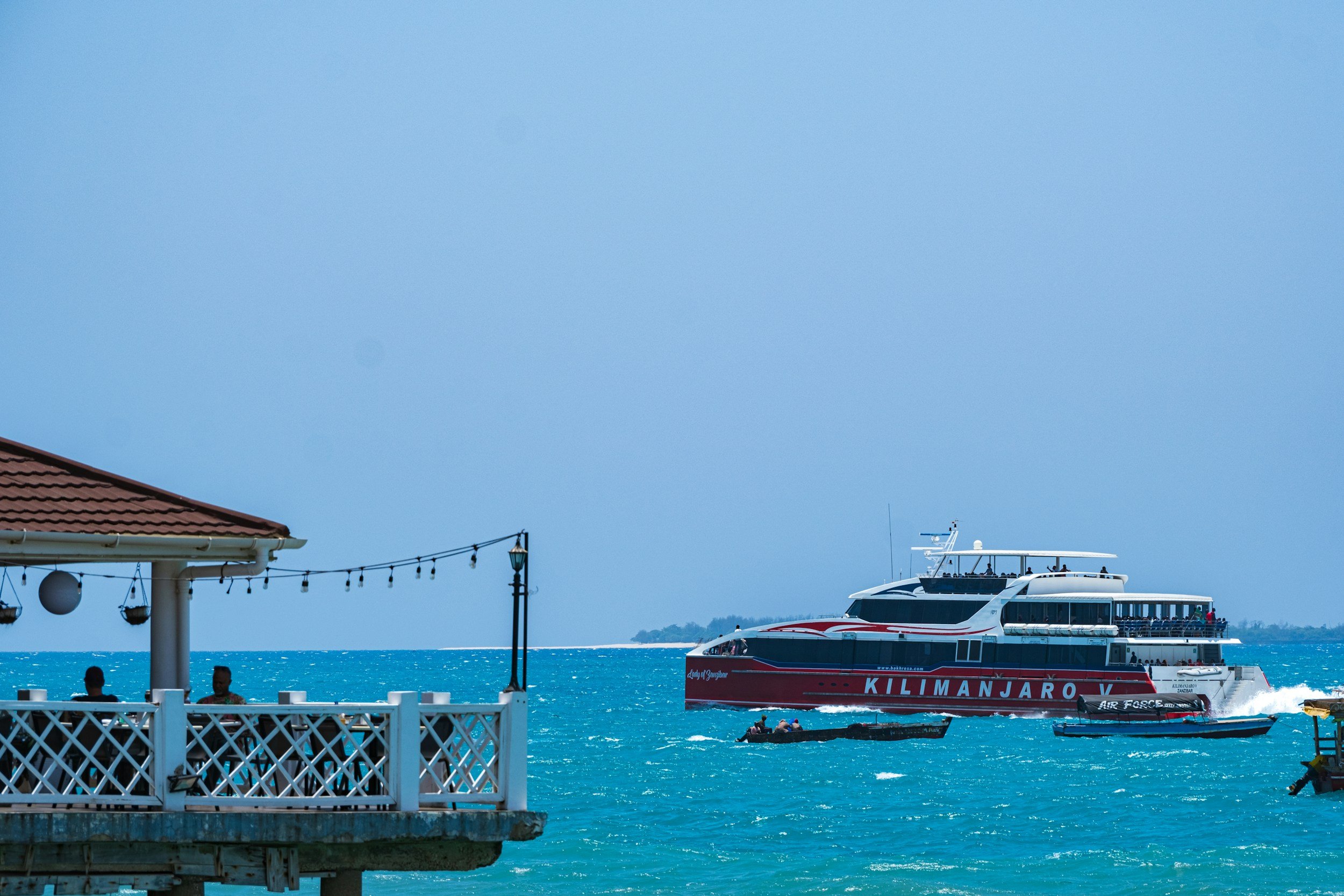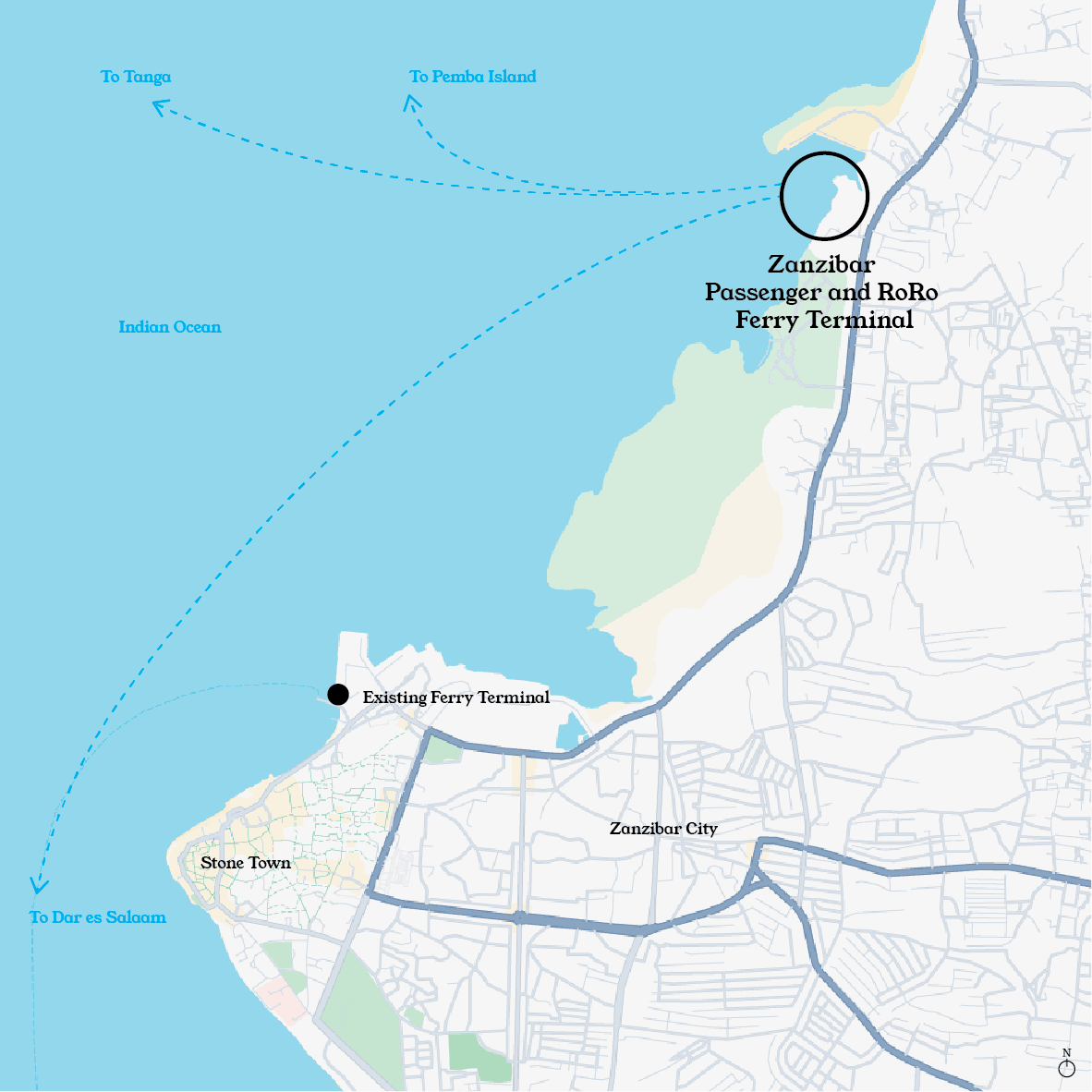Location
Located less than 50km off the coast of Tanzania and Eastern Africa lies the semi-autonomous region of Zanzibar, an archipelago consisting of over 50 islands, the two most populated being Unguja and Pemba. On Unguja sits Zanzibar City, the largest city in Zanzibar, including the neighborhood of Stone Town, a UNESCO World Heritage Site and location of the current ferry terminal. The New Zanzibar Ferry and RoRo Terminal will move ferry operations outside of Stone Town, north to Maruhubi. This relocation will alleviate traffic and pollution from the World Heritage Site, whilst simultaneously upgrading ferry operations to modern standards.

Unguja Island
The UNESCO-protected site, Stone Town of Zanzibar stands as a splendid representation of the Swahili coastal trading towns in East Africa. Its urban layout and architectural character remain remarkably preserved, showcasing numerous exquisite structures that mirror its unique culture. This culture has harmoniously melded various influences from Africa, the Arab region, India, and Europe over a span of more than a thousand years.
The preservation of this unique blend of history and design is a core part of the redevelopment of the area, ensuring authenticity. Furthermore, Zanzibar is known for its unique ecology, influenced by its location in the Indian Ocean. Under threat from climate change, habitat loss, and overfishing, there are several conservation initiatives in place to protect the island's unique biodiversity, including the establishment of protected areas and the implementation of measures to reduce overfishing. Zanzibar's distinctive ecology has been recognized by the international community, with its coral reefs designated as a UNESCO World Heritage Site in 2012.
Relocation of Ferry Terminal
The relocation allows for a newly developed and larger site (34 hectares) for the Passenger and RoRo Ferry Terminal. The old terminal was built in the 1920s and had no room for the increased passenger and cargo demand.
In addition to introducing much-needed structural improvements to the port, such as a dedicated cargo terminal and increased ferry capacity, the former site is dedicated to the stimulation of the Blue Economy of Zanzibar (Zanzibar BluE).
The allocation of the current site to redevelopment by the Zanzibar Government for BluE purposes stimulates the economy as much as the environment, all the while preserving the sites unique character.
Connecting Zanzibar to East Africa
Currently the Passenger and RoRo Ferry Terminal at Malindi sees 3 million passengers per year - and is projected to increase by 200% within the next decade. Locals, workers, and tourists alike depend on the ferry for connection to mainland Tanzania and the extended East Africa Region, thus the improved port would be a major quality of life improvement for the citizens of Zanzibar, as well as providing an economic boost.
In addition to this, an upgraded ferry terminal in Zanzibar would:
-
Easier and more convenient travel for tourists would lead to increased tourism revenue and job creation.
-
An upgraded ferry terminal would facilitate trade between Zanzibar and the rest of East Africa, benefiting businesses and consumers on both sides.
-
A broader selection of routes, increased ferry frequency, and new ferry connections would reduce travel time and costs for passengers, making it easier and more affordable for people to travel to and from Zanzibar and connect with other parts of East Africa.
-
An upgraded ferry terminal would enhance connectivity between Zanzibar and the rest of East Africa, promoting regional integration and cooperation.
-
An upgraded ferry terminal would also facilitate cultural exchange between Zanzibar and the rest of East Africa, helping to promote understanding and appreciation of different cultures.
Transportation Routes
Connecting Zanzibar’s Passenger and RoRo Ferry Terminal to Tanga, Pemba, and Dar es Salaam would be a positive development benefitting both Zanzibar and the broader East African region.
Dar es Salaam
The largest city and commercial capital of Tanzania, Dar es Salaam is located on the mainland coast. Connecting the Zanzibar Passenger and RoRo Ferry Terminal to Dar es Salaam would provide a direct link between Zanzibar and the country's economic hub. This would boost trade and investment, and create jobs on both Zanzibar and the mainland.
Tanga
A major port city in Tanzania, Tanga is located on the mainland coast. Connecting the Zanzibar Passenger and RoRo Ferry Terminal to Tanga would provide a direct link between the island and the mainland, making it easier and more convenient for people and goods to travel between the two. This would boost trade and economic activity, and reduce travel time and costs for passengers.
Pemba Island
Another island in the Zanzibar Archipelago, Pemba Island is located north of Unguja Island. Connecting the Zanzibar Passenger and RoRo Ferry Terminal to Pemba would make it easier and more convenient for tourists and locals to travel between the two islands. This would boost tourism revenue and create jobs on both islands.





